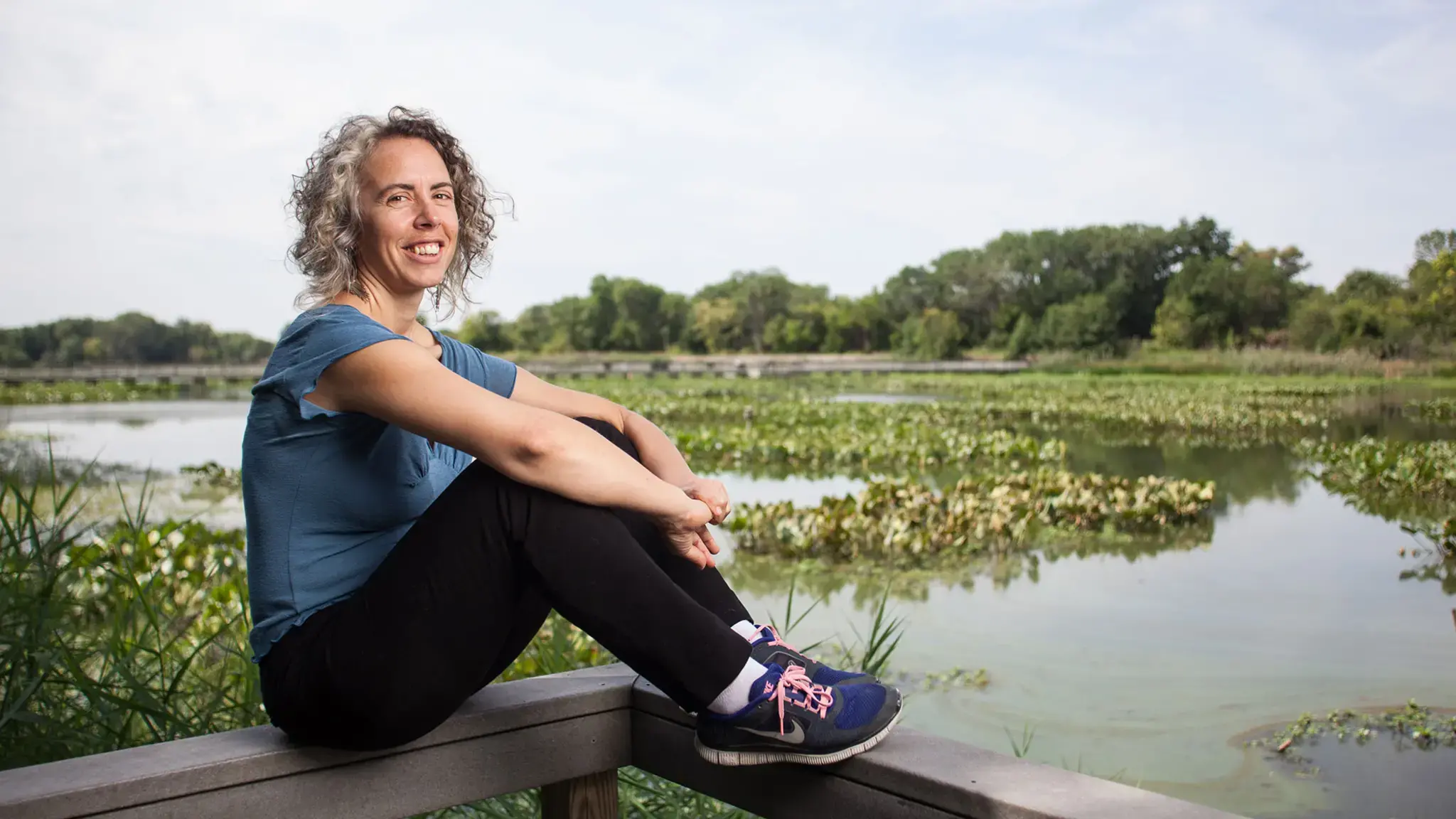

As part of our “Fellows Friday” web feature, we focus on the artistic lives of our Pew Fellows: their aspirations, influences, and creative challenges. This week, we speak to 2013 Pew Fellow and poet Emily Abendroth, whose book ]EXCLOSURES[ is newly available this month from Ahsahta Press. Of the book, writer and artist Chris Nagler says, “Sometimes there is a book you love so much you become frightened for the world. ]EXCLOSURES[ is that for me.”
What is your favorite title of an art work?
I’ve always loved the painter Paul Klee’s titles, and the way their presence as text impacts your orientation to his works. For instance, a beautifully intricate, multi-layered, and color-saturated image gets labeled rather firmly With the Egg, suddenly drawing your eye to a single yoke-endowed, ivory splash in the lower center of the image, which gains a different kind of buoyant gravity and hovering importance as a result.
On the other hand, a small, simple line drawing of two elongated, lumpy, and top-heavy androgynous figures—who in their leaning into one another seem to almost merge together—gets affixed with a description that is something far more than merely a “title” for what’s occurring before your eyes. Instead, appended is a mini-narrative that reads: “Occasionally I’d fool people some, / I’d put acid in their drinks, / I’d put poison in their food, / And make it hurt when they mate. / I founded an order with merrily dancing tears on its banner.” I love the joyful labor that necessarily happens as the viewer tries to put those two somewhat incongruous verbal and visual discourses in contact with one another.
How does residing in this region contribute to your artistic practice?
I’ve never considered myself to be a regional writer or to fit into the category of a “writer of place.” For lack of a better way to say it, I’m definitely more a “poet who lives in Philadelphia,” as opposed to a “Philadelphia poet.” [However,] the current dynamics of Pennsylvania politics profoundly shape my understanding of the obstacles that preclude our achievement of individual and collective health, well-being, self-determination, and, ultimately, emancipation (be it cognitive or physical in nature). This, in turn, informs my sense of what art has a mandate to attempt to, first, make legible and, then, to confront. I don’t by any stretch think this is art’s only mandate but, from my perspective, it is a primary one of them. Perhaps since I used the artist Paul Klee as an example to speak about titling, it makes sense to offer his comment that “Art does not reproduce the visible; rather, it makes visible.” I hope that my work sometimes achieves that.
How has your thinking about the business of your practice changed since you started working professionally?
Given that my primary artistic medium is poetry, I don’t work professionally, or at least not in the way that I think this question implies. That said, I do without question take my own artistic work and efforts seriously and I do situate them as a meaningful center of gravity, experimentation, and potential transformation in my existence. As time, in conjunction with my own writing practice, progresses I find myself working incrementally more slowly and more deeply. I accept that it will likely take me both a long time and a laborious, challenging journey to reach the more interesting and challenging thoughts/results in any given project. Such a process does not map well onto a standard capitalist model of either production or success.
What images or things keep you company in the space where you work?
Immediately surrounding and behind my desk, one will find the following four items plastered prominently before my eyes on the wall: